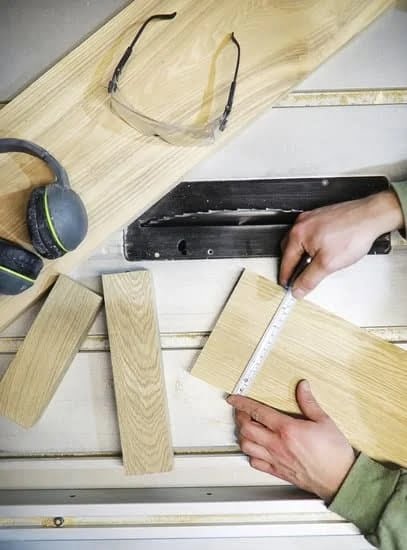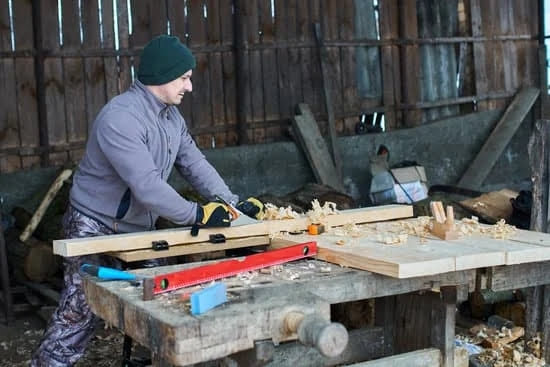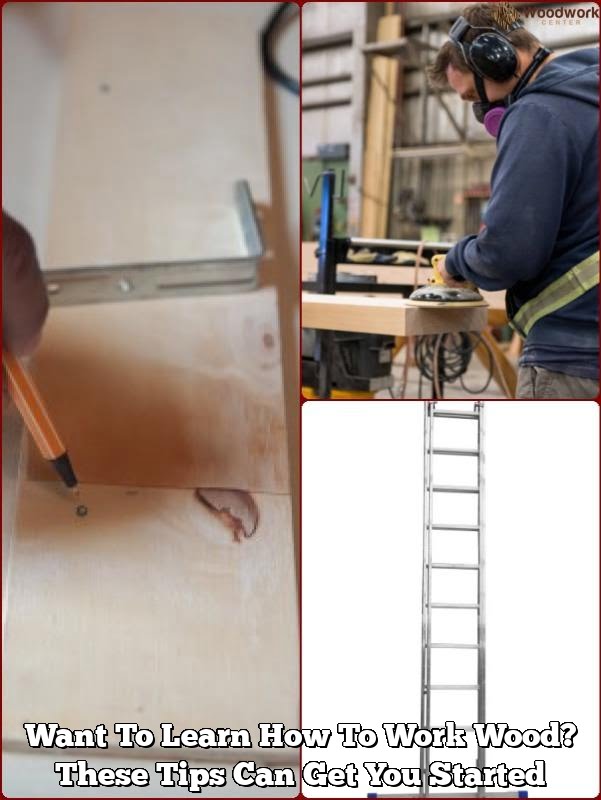What is the function of a router in woodworking? A router is a versatile power tool that plays a crucial role in shaping and creating intricate designs on wood. From crafting edges to cutting joinery, the router is an essential tool for woodworkers of all skill levels. In this article, we will delve into the various aspects of routers in woodworking, including their history, types, functions, and safety tips.
The evolution of routers in woodworking has revolutionized the way craftsmen create beautiful pieces of furniture and other wooden creations. From humble beginnings as hand tools to modern-day electric routers, these tools have become indispensable in any woodworking shop. Understanding how routers have developed over time can provide insight into their importance in the woodworking industry today.
There are different types of routers used in woodworking, each with its own unique features and capabilities. By choosing the right type of router for a specific task, woodworkers can achieve precise results and enhance the quality of their projects. Whether it’s a fixed-base router for basic tasks or a plunge router for more intricate work, having knowledge about these tools is essential for anyone working with wood.
History and Evolution of Routers in Woodworking
The history of routers in woodworking dates back to ancient times when simple hand tools were used to carve and shape wood. As time passed, the evolution of routers has been marked by significant changes and advancements in technology. The first electric router was invented in the early 20th century, revolutionizing the way woodworkers could cut, shape, and create intricate designs with precision and efficiency.
With the introduction of power tools, routers became more powerful and versatile, allowing for greater control and accuracy in woodworking projects. CNC (Computer Numerical Control) routers have also emerged as a popular choice for industrial woodworking operations due to their automated precision and ability to produce complex designs with speed and consistency. This advancement in technology has led to increased productivity and quality in woodworking craftsmanship.
Today, routers are essential tools in the woodworking industry, used for a wide range of applications such as shaping edges, creating grooves, dovetails, mortises, dados, and more. Woodworkers can choose from a variety of router types including handheld routers, table-mounted routers, plunge routers, trim routers, and CNC routers based on the specific requirements of their projects. Understanding the history and evolution of routers in woodworking highlights the importance of this versatile tool in modern carpentry practices.
Types of Routers Used in Woodworking
The types of routers used in woodworking play a crucial role in determining the efficiency and precision of the woodworking projects. There are several variations of routers available in the market, each serving different purposes based on the specific woodworking tasks at hand.
One common type of router used in woodworking is the plunge router. This versatile tool allows woodworkers to make intricate designs, dado cuts, and mortises with ease. The plunge mechanism enables the user to lower the bit into the wood at any point, making it ideal for creating interior cuts or starting holes in the middle of a workpiece.
Another popular type is the fixed-base router, which provides stability and control during routing operations. Fixed-base routers are commonly used for edge profiling, dado cutting, and template routing. The base remains stationary while the bit spins, allowing for consistent depth and precision in cuts.
Additionally, combination routers offer the benefits of both plunge and fixed-base routers in one versatile tool. Woodworkers can easily switch between modes to accommodate various woodworking techniques and project requirements. These types of routers provide flexibility and convenience, making them valuable assets in any woodworking workshop.
| Type of Router | Main Features |
|---|---|
| Plunge Router | Versatile for intricate designs; ideal for interior cuts |
| Fixed-Base Router | Stability and control; consistent depth in cuts |
| Combination Router | Flexibility to switch between plunge and fixed-base modes |
Functions of a Router in Woodworking
A router in woodworking serves multiple essential functions that are crucial for creating intricate designs, smooth edges, and precise cuts in wood. Understanding the various functions of a router can help woodworkers utilize this versatile tool to its full potential. Here are some key functions of a router in woodworking:
1. Shaping: One of the primary functions of a router in woodworking is shaping wood pieces by creating decorative edges, profiles, and patterns. This is achieved by using different router bits that come in various shapes and sizes. Woodworkers can create custom designs and add unique details to their projects using a router for shaping.
2. Joinery: Routers are also commonly used for creating strong and durable joints in woodworking projects. By using specific joinery bits, woodworkers can make dovetail joints, box joints, mortise and tenon joints, and more with precision and accuracy. These joints enhance the structural integrity of furniture pieces and other woodworking projects.
3. Hollowing Out: Another important function of a router in woodworking is hollowing out areas in wood for inset panels, hinges, or other hardware fittings. Routers equipped with plunge bases allow woodworkers to accurately hollow out precise depths without cutting through the entire piece of wood. This function is especially useful for making recessed doors or creating custom insets in wooden surfaces.
Understanding these key functions of a router helps woodworkers appreciate the versatility and efficiency that this tool brings to their woodworking projects. Whether it’s shaping edges, creating strong joints, or hollowing out areas in wood pieces, routers play a vital role in enhancing the quality and design of various woodworking creations.
Detailed Explanation of How a Router Works
The router is a powerful woodworking tool that is essential in shaping, cutting, and detailing wood pieces. But what is the function of a router in woodworking exactly? A router works by spinning a cutting bit at high speeds to remove material from the workpiece, creating intricate designs, edges, and joints. By controlling the depth and speed of the router, woodworkers can achieve precise cuts and shapes on their projects.
One key function of a router in woodworking is its ability to create various profiles and decorative edges on wood pieces. With different types of router bits available, such as round-over bits, chamfer bits, and ogee bits, woodworkers can easily add flair and detail to their projects. Whether crafting furniture pieces or cabinetry, the versatility of a router allows for endless design possibilities.
Additionally, a router can also be used for joinery purposes, such as creating dovetail joints, rabbets, dados, and grooves on wood pieces. The precision and accuracy of a router make it an ideal tool for creating strong and seamless connections between different sections of a project. Woodworkers can rely on routers to ensure that their creations are not only visually appealing but also structurally sound.
| Function | Description |
|---|---|
| Create Profiles and Edges | Able to use different router bits to add decorative edges and profiles to wood pieces. |
| Joinery | Used for creating strong joints like dovetails or rabbets that are crucial for woodworking projects’ structural integrity. |
Essential Router Techniques for Woodworking Projects
Routers are versatile tools that play a crucial role in woodworking projects. Whether you are a beginner or an experienced woodworker, mastering essential router techniques is key to achieving professional results. Here are some fundamental techniques that can help you make the most out of your router:
- Edge Profiling: One of the most common uses of a router in woodworking is edge profiling. This technique involves shaping the edges of a piece of wood to create decorative profiles or clean edges. By using different router bits, such as round-over bits or chamfer bits, woodworkers can achieve various design elements on their projects.
- Rabbeting and Dadoing: Routers are also used for creating rabbets and dadoes in woodworking. A rabbet is a notch cut along the edge of a piece of wood to join it to another piece, while a dado is a groove cut across the grain of the wood for inserting shelves or panels. With the right router bit and depth adjustment, woodworkers can quickly and accurately create these joints.
- Plunge Routing: Plunge routing is another essential technique that allows woodworkers to start cutting into the middle of a piece of wood instead of just along its edges. This technique is useful for creating mortises, carving designs, or making intricate cuts on wooden surfaces. By adjusting the plunge depth, speed, and feed rate, woodworkers can control the precision and accuracy of their cuts.
Mastering these essential router techniques will not only enhance your woodworking skills but also open up new possibilities for creative designs and projects. By understanding how to use your router effectively and safely, you can take your woodworking craftsmanship to the next level and achieve professional-quality results that showcase your attention to detail and precision.
Remember always to practice safe routing practices by wearing appropriate safety gear, maintaining proper tool maintenance, and following manufacturer instructions when using your router for woodworking projects. With patience, practice, and dedication to learning new techniques, you can harness the full potential of what routers have to offer in enhancing your woodworking skills and expanding your creative capabilities.
Safety Tips When Using a Router in Woodworking
Understanding the Importance of Safety When Using a Router
Using a router in woodworking can significantly enhance the precision and efficiency of your projects, but it is crucial to prioritize safety. Routers are powerful tools that can cause serious injuries if not handled correctly. Understanding and implementing safety measures while using a router is essential to protect yourself and others in the workshop.
Wearing Personal Protective Equipment
One of the most important safety tips when using a router in woodworking is wearing appropriate personal protective equipment (PPE). This includes safety goggles to protect your eyes from flying wood chips, ear protection to reduce noise levels, a dust mask to prevent inhalation of sawdust, and sturdy work gloves to protect your hands from sharp edges. Wearing PPE can help minimize the risk of accidents and ensure a safer woodworking experience.
Securing Workpieces and Using Router Safely
Before starting any routing operation, it is essential to secure the workpiece firmly in place using clamps or a vise. This prevents the piece from moving unexpectedly during routing, reducing the risk of accidents. Additionally, always make sure the router bit is securely fastened in place before turning on the tool.
When using the router, maintain a firm grip on both handles with both hands to control the tool effectively. Avoid reaching over or around the spinning bit and keep your fingers away from its path to prevent injuries.
Comparing Routers to Other Woodworking Tools
When it comes to woodworking, there are a variety of tools that can be used to achieve different results. One of the most versatile and essential tools in a woodworker’s arsenal is the router. In this section, we will compare routers to other common woodworking tools to understand the unique functions and advantages they offer.
Router vs. Circular Saw
One of the most common comparisons in woodworking is between a router and a circular saw. While a circular saw is great for making straight cuts in wood, it lacks the versatility of a router when it comes to creating intricate designs, grooves, and edges. Routers can be equipped with different bits that allow woodworkers to create custom shapes and profiles, making them ideal for decorative projects like cabinetry, furniture making, and trim work.
Router vs. Jigsaw
Another tool often compared to a router is a jigsaw. While both tools are used for cutting curves in wood, they serve different purposes. A jigsaw is typically used for rough cuts or cutting out shapes in large pieces of material, while a router excels at precision cuts and finishing work. Routers can create clean edges, smooth surfaces, and intricate details that may be challenging to achieve with a jigsaw alone.
Router vs. Table Saw
Lastly, let’s compare routers to table saws – another staple in woodworking shops. Table saws are perfect for ripping large sheets or boards but may struggle when it comes to smaller pieces or detailed work. Routers shine in these areas by allowing woodworkers to make precise cuts, joinery, and decorative edges with ease. Additionally, routers can be mounted on tables for more controlled operations, making them incredibly versatile tools in any woodworking project.
Conclusion
In conclusion, the router plays a crucial role in the woodworking industry due to its versatility and efficiency. From shaping edges to creating intricate designs, the router has become an indispensable tool for woodworkers of all skill levels. Its ability to perform multiple functions such as cutting, trimming, and grooving makes it a valuable asset in any workshop.
One of the key aspects that sets the router apart from other woodworking tools is its precision and accuracy. Woodworkers have come to rely on routers for creating clean and detailed cuts that elevate their projects to a professional level. Whether it’s crafting decorative patterns or joining pieces of wood together seamlessly, the router’s function in woodworking cannot be understated.
Moreover, as technology continues to advance, routers have also evolved to meet the changing demands of the woodworking industry. With innovative features and improved capabilities, modern routers offer even more possibilities for craftsmen to explore. As woodworking techniques continue to evolve, one thing remains constant: the router will always remain a fundamental tool in any woodworker’s arsenal.
Frequently Asked Questions
What Is a Woodworking Router Used For?
A woodworking router is a versatile tool used for hollowing out an area in a piece of wood. It is commonly used for shaping edges, creating grooves, and cutting intricate patterns. The router can be handheld or mounted on a table for more precise work.
What Is a Router Used For?
In general, a router is a power tool that can be used in various applications beyond woodworking. It is primarily used for routing out (hollowing out) an area in materials like wood, plastic, and metal. Routers are essential in tasks such as cabinetry, furniture making, and creating decorative trim.
Is a Router Necessary Woodworking?
While a router is not absolutely necessary for woodworking, it is considered an indispensable tool by many woodworkers due to its versatility and capabilities. Routers provide efficiency and precision when shaping wood pieces, cutting joints, or creating intricate designs. They significantly expand the possibilities for creativity in woodworking projects.

Hi everyone! I’m a woodworker and blogger, and this is my woodworking blog. In my blog, I share tips and tricks for woodworkers of all skill levels, as well as project ideas that you can try yourself.





